Fitness: I Like Where It’s Going
They say history repeats itself. I’ve seen it in the world of finance market crashes, fashion trends coming back in style, and what else I’m not really sure. And oh yeah, fitness!
Here’s what I want to do: Give you a brief history of fitness and then go over what I feel are the leading trends in health and fitness today. Here’s what’s interesting: the leading trends that I’ll discuss aren’t necessarily discoveries of modern science. Our ancestors and previous generations were doing this “new age” shit years ago! For instance, today people are talking about moving more and “Animal Flow” is a hot trend. Well our cavemen ancestors didn’t care that they were burning calories while hunting and gathering and basically doing Animal Flow all day every day. OK, maybe that’s a stretch of history repeating itself. Well then gymnastics is getting a huge resurgence by itself and from CrossFit. Back in the early 1800’s it was all the rage too! That’s definitely history repeating. And all this correct breathing stuff? Yeah martial artists and tai chi practitioners had a very good grasp of good breathing and posture some fifteen hundred years ago.
Moving on. So here are the main points of where I feel fitness is going and don’t worry, I’m going to explain these in detail later:
- Move well, move often.
- Mobility over flexibility.
- Stability before strength.
Here’s some good fitness:
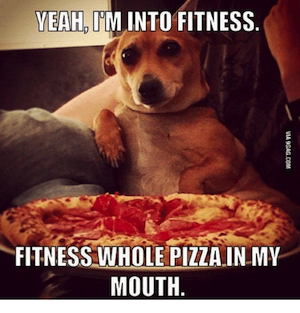
Just kidding. I love that little pic. I digress. Before we get to where fitness is going, lets discuss where it’s been. So fitness started in about the 70’s, right? JUST KIDDING!
If we want to get real about it, fitness has been existent since we as humans were created. How did we get food, how did we build huts, homes, habitats? Our ancestors worked!
The best article I’ve ever seen on the history of fitness is The History Of Physical Fitness. I encourage you to give it a read if you have a history bone in your body. I have a lot of them. Here’s a brief synopsis of the history of fitness:
Jayson’s Brief synopsis of Fitness:
Primal Times — Before 10,000BC. Basically run for your life. All day. And kill what you have to eat. All day. And then move to the next camp. Repeat. There’s enough physical fitness for you. Work or die.
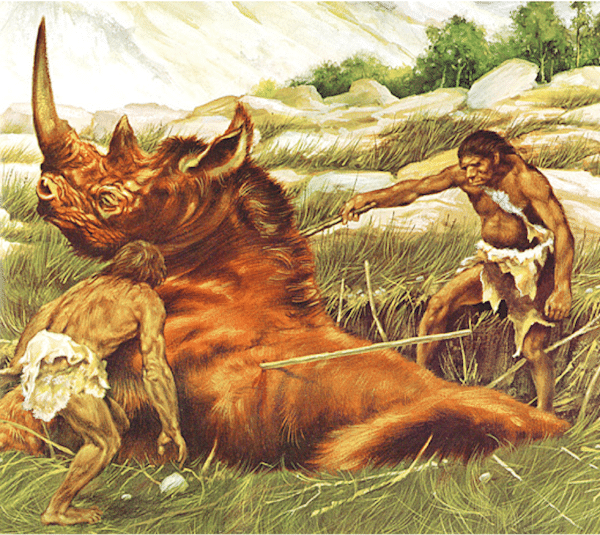
Neolithic Times
Agricultural Revolution (10,000BC — 8,000BC) — Changed the way our ancestors lived, less running and jumping. Probably a lot more lifting and carrying. This is when the Farmer’s Carry was invented! So again, the fitness was work your ass off or die.
Conquest Times (4,000BC — 400BC) — Just a name I gave this time period, don’t repeat to anyone. During this time civilizations were rising and falling. The Assyrians, Babylonians, Egyptians, Greeks, and Romans were in all out battle preparation all the time. Again, prepare for war or die, that’s some pretty good fitness.
During this time Greeks developed games similar to the Olympic games. It took a long time until we had more “official” Olympic games in 1896. But the first unofficial olympic games had many events that were based on, what else, War. The javelin throw, wrestling, fighting, discus, etc.
Dark Ages — (5th Century — 1500) — More of a focus on church and preparing for the afterlife. Not much of a focus on the body. Although some form of martial arts is believed to have started around this period.
Renaissance — (1400–1600) — Body and beauty comes back into vogue. Physical education was incorporated into school programs. Books began to be published about “gymnastica” and physical fitness.
Industrial Revolution — (1760–1830ish) — This is probably the more realistic beginning to fitness as we know it. People weren’t required to move as much anymore so more intentional physical exercise arose. Preparing one self for war became a sense of pride and duty.
Introduction of Gymnastics and the Gym — 1800–1820s — Father of Gymnastics, Friedrich Jahn from Germany, advanced the notoriety of the concepts of gymnastics (Then called Turnverin) and opened the first “gym”.
1820–1950ish — An assortment of gym concepts all basically around calisthenics and gymnastics popped up throughout the country. Fitness started to become more mainstream. Jack Lalanne opens up his first gym and what he claimed was the first modern gym. Maybe in the US. Europe been on that for a while Jack.
1950’s — Vibrating belt was touted to vibrate fat away. Didn’t work to well.
1960’s — First Gold’s Gym opens in 1965. Strength training and body building are becoming more prominent.
1970’s — Jazzercise becomes popular. Arnold Schwarzenegger and Lou Ferrigno star in “Pumping Iron” in 1977.
1980’s — Aerobics! and Tae Bo. Even though the term aerobics was given the name in the 60s by a military physician trying to prevent coronary heart disease, it still seems like the 80’s were the years of Richard Simmons and aerobics.
1990’s — Spinning becomes a thing after Johnny Goldberg made his first stationary bike in 1989 and then started teaching people in 1990.
2000’s — Crossfit started to gain prominence and still is doing very well.
Alright, enough of this history stuff. Let’s get into where I think fitness is going.
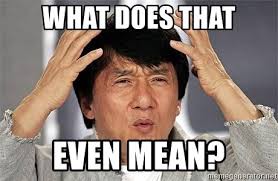
- Move well, move often. What?? Let me explain. There has been a much bigger focus on how the body is supposed to move as opposed to just lifting stuff and hoping for the best. That’s the “move well.” And another recent focus is moving the body in MANY different directions as opposed to just one plane of movement (Difference between running on a mountain which forces your joints to work many different angles as opposed to just running on pavement).
Let me explain more about move well. A company called Functional Movement Systems and a gentlemen by the name of Gray Cook have become leaders in helping people move correctly. What is correct movement? Well our bodies have a sequence of joints alternating between stable and mobile. And they should be treated as such. See the diagram below.
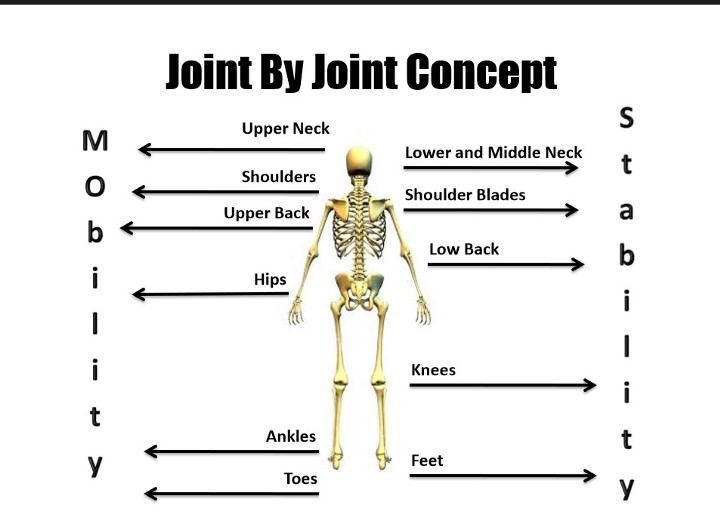
Our toes are mobile and then our feet are stable joints, and then our ankles have a tri-planer range of motion meaning they can move them in all different directions. Why does this matter? I feel it’s most important with the lower back and shoulder movements. We need awareness that our shoulder blades should to be stacked, or stable, and then this will enable our shoulder joints to move safer and better. Another example is our thoracic spine or upper back is mobile and should be able to move well. If it doesn’t, your body may try to make other areas like your stable low back try to do things that it shouldn’t. This awareness helps protect from injuries and bad habits for our clients.
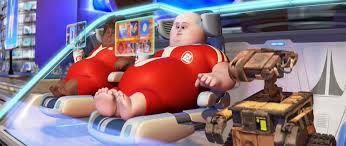
Move often? Katy Bowman wrote a great book called, “Move Your DNA: Restore Your Health Through Natural Movement.” Here’s the basic idea I think: In the movie, Wall-E, the human race becomes basically marshmallows. This is from laziness obviously and mainly I feel it can also be attributed to all the luxuries we have of: soft beds, couches, sinks, toilets, car seats, office seats, etc. We really don’t have to move much at all anymore! We don’t even have to turn around to put our car in reverse! Our ancestors traversed over rugged terrain. They hammered stuff, dug stuff, climbed stuff, pulled stuff. Our joints and bodies are made to move! And not only move forward and backward, but sideways, up, down, all over! Katy’s book discusses moving more in all different directions and ways this helps us mentally, physically, and hormonally.
Both of these concepts I incorporate into training of myself and clients. I’m always aware of what body parts should be moving and what should be stable. And then I also try to integrate all the different planes of movement. We should be challenging our joints, moving them! At each person’s ability of course. We don’t just jump into traversing difficult terrain right off the bat, or start doing squats without building up to them first. That’s a recipe for disaster. We must ensure we have good mobility before moving too often. Which takes us to our next point.
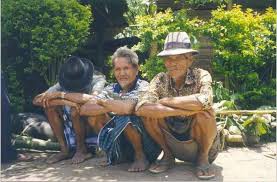
2. Mobility over flexibility? First, what’s the difference? Well mobility is how you can move your joints on your own and flexibility is how you can move your joints with assistance. So for example, the Rockettes kicking their legs up to their heads is mobility and if they put their legs on a bar and stretch, that’s flexibility. What we’re learning is that challenging the joint range of motion on your own both strengthens the joint AND increases range of motion. There’s a company called FRC or Functional Range Conditioning and they’ve really enlightened the world on how strengthening the ranges of motion and expanding our joint capabilities helps prevent injuries and gives us a healthier and happier body. Don’t believe me? Check out this study that relates a humans ability to sit on the floor and stand up without any assistance is an indicator of a person’s mortality. “Simple Sitting Test Predicts How Long You’ll Live.”So mobility is pretty important. The reality is if you don’t use it, you’ll lose it. Little by little.
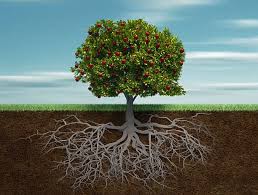
3. Stability before strength? Seeing people be able to bench a ton of weight or squat a lot and then not be able to hold a plank for a minute is nothing new. It’s a sure sign of no stability. Another is people do a walking lunge and fall all over easily. There are no roots! Core strength is a term thrown around ad nauseam. But think of it like this. What’s stronger, a tree in the middle of a field that stands alone or a tree in the forest that has a lot of trees around? Answer: The tree in the middle of the field has developed a strong root foundation because of having to hold itself up in the midst of powerful winds. That’s what happens when people focus on working their core (Ugh, I almost hate even saying it). If we take this further, it is paramount to have good stability before a squat, deadlift, or other full body movements. And then even further, playing sports like golf we need to have good stability in certain parts of our body and good mobility in others during the golf swing itself. So if you thought just holding a plank was difficult, try keeping your bottom half stable while making your top half mobile.
Overall, these are welcome trends for me in the world of fitness. I love the science in fitness and these trends combine that aspect with practicality. The joints need to move because synovial fluid is produced. So move more! In all different directions. This is the ultimate of applying what we learn in the lab to what we can do in our lives. Now get out there and do it!!

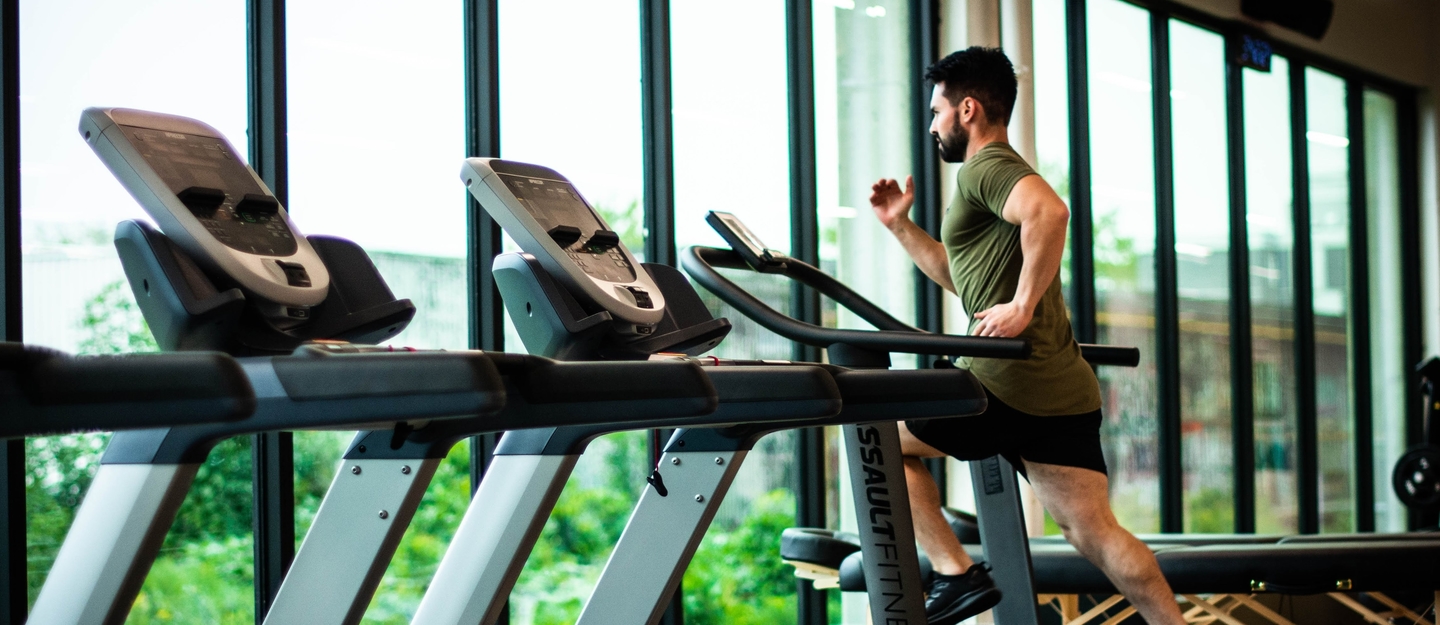

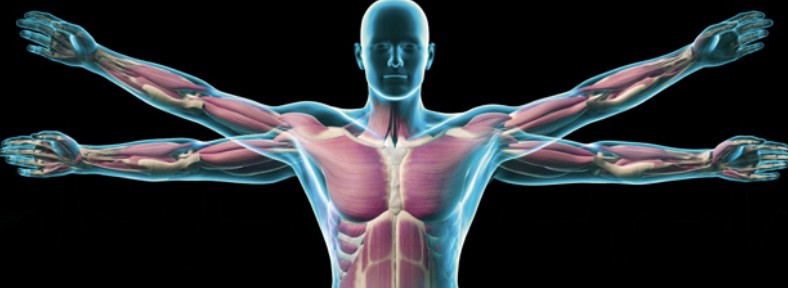


Responses